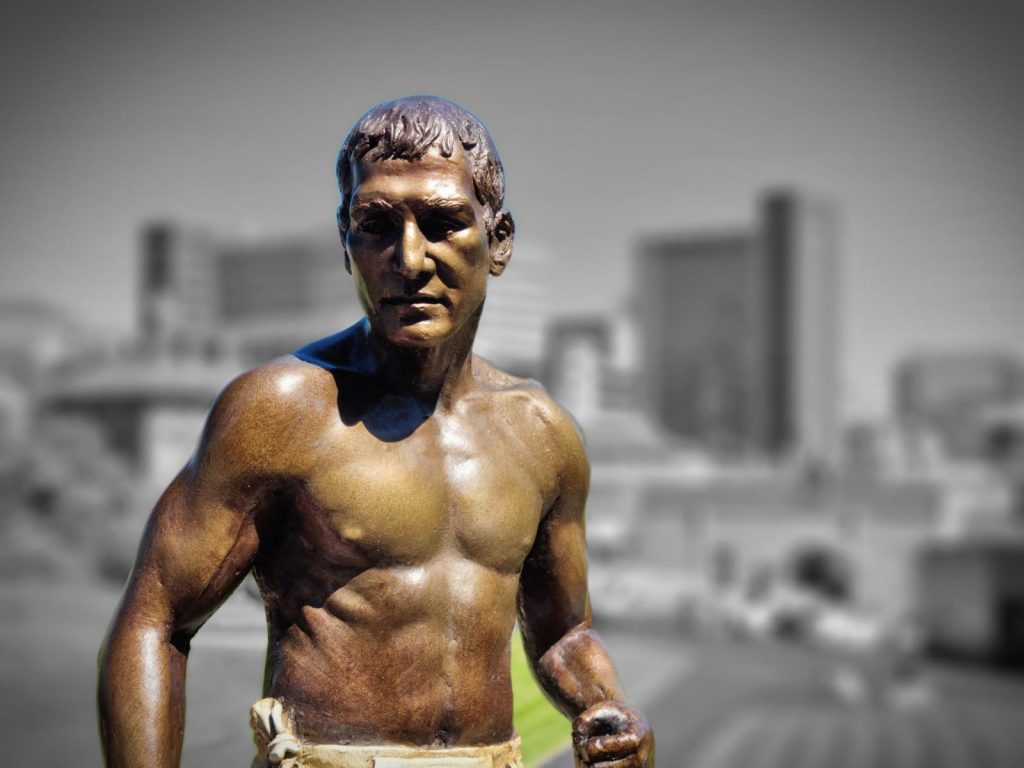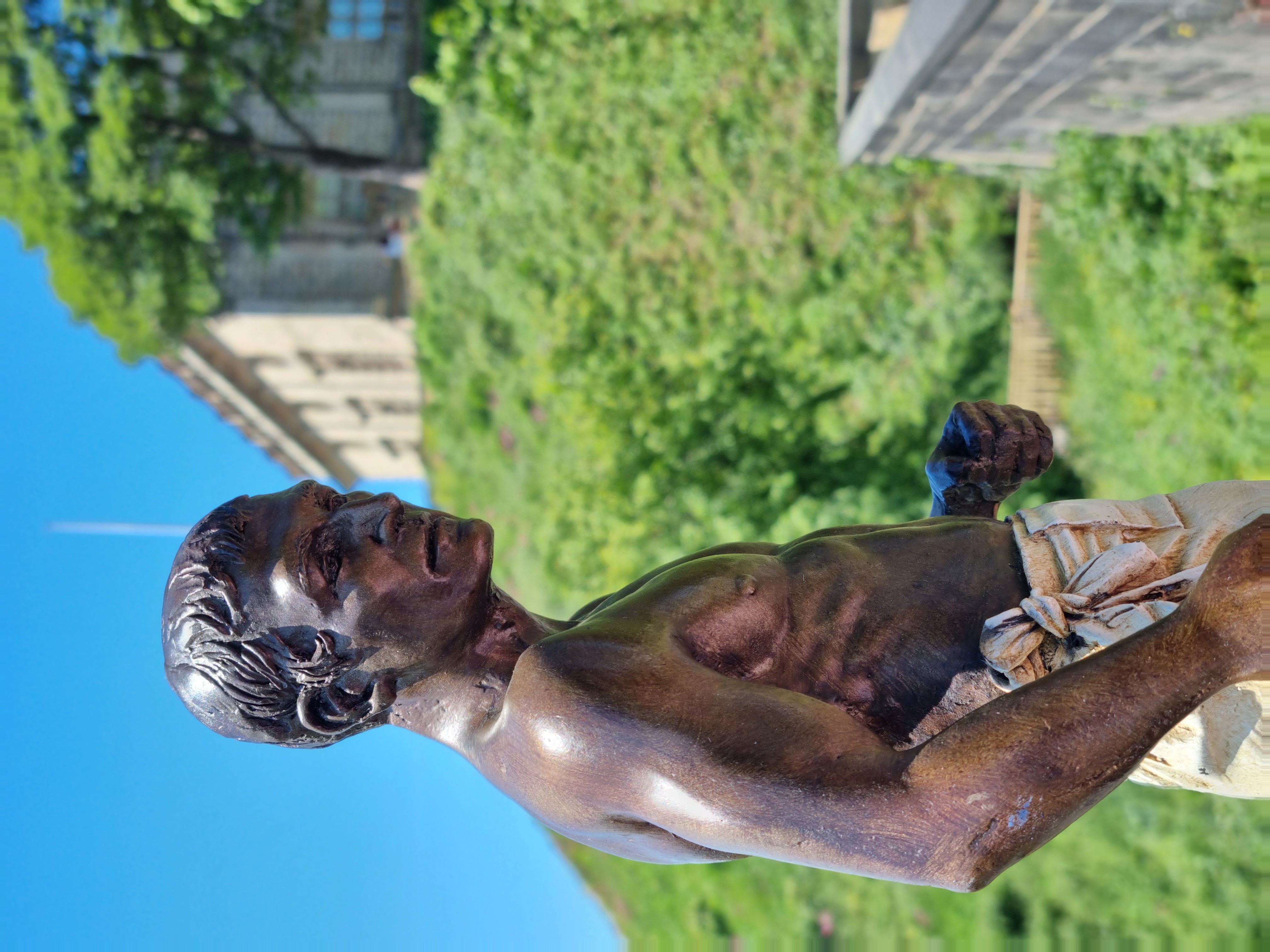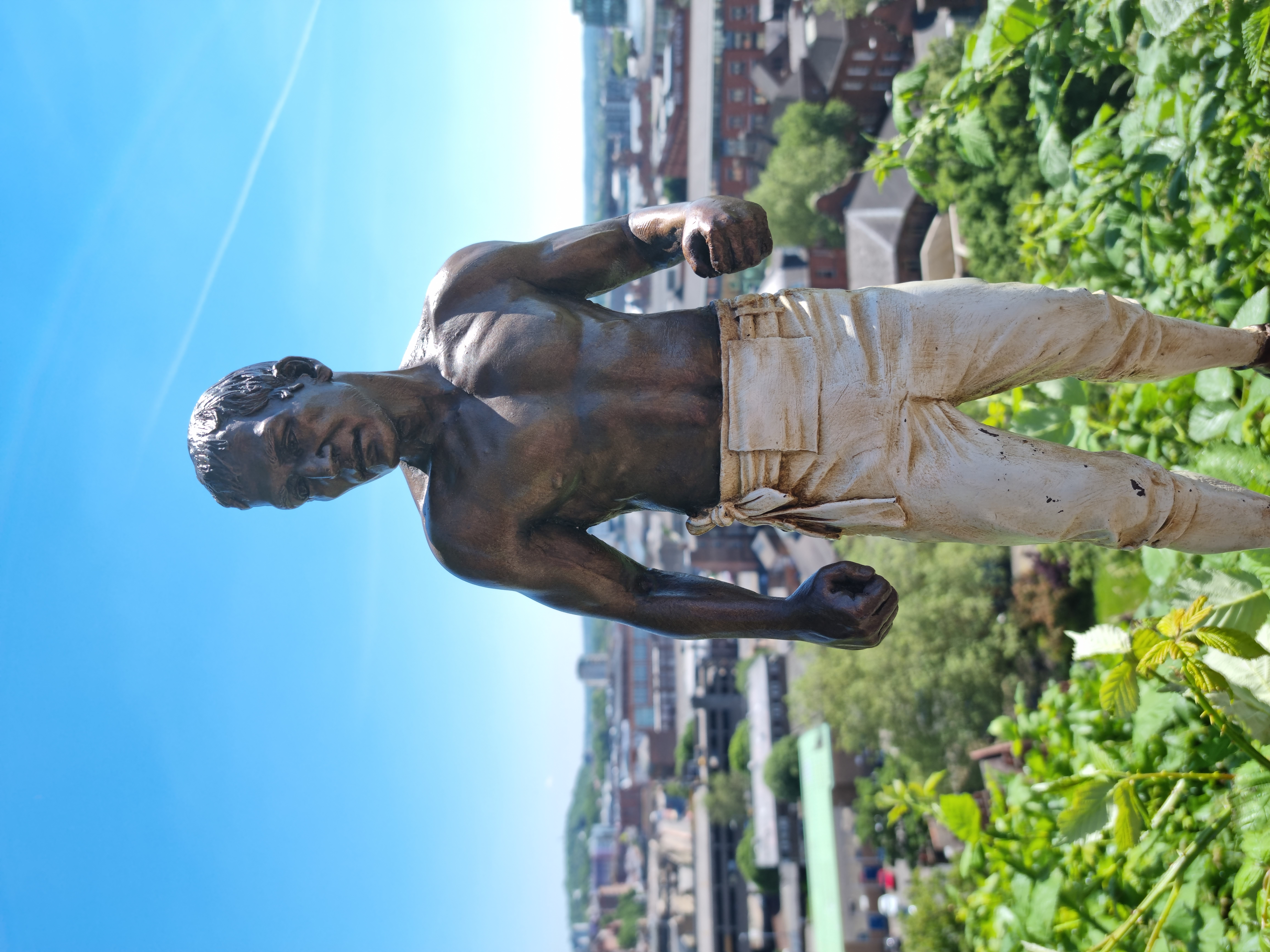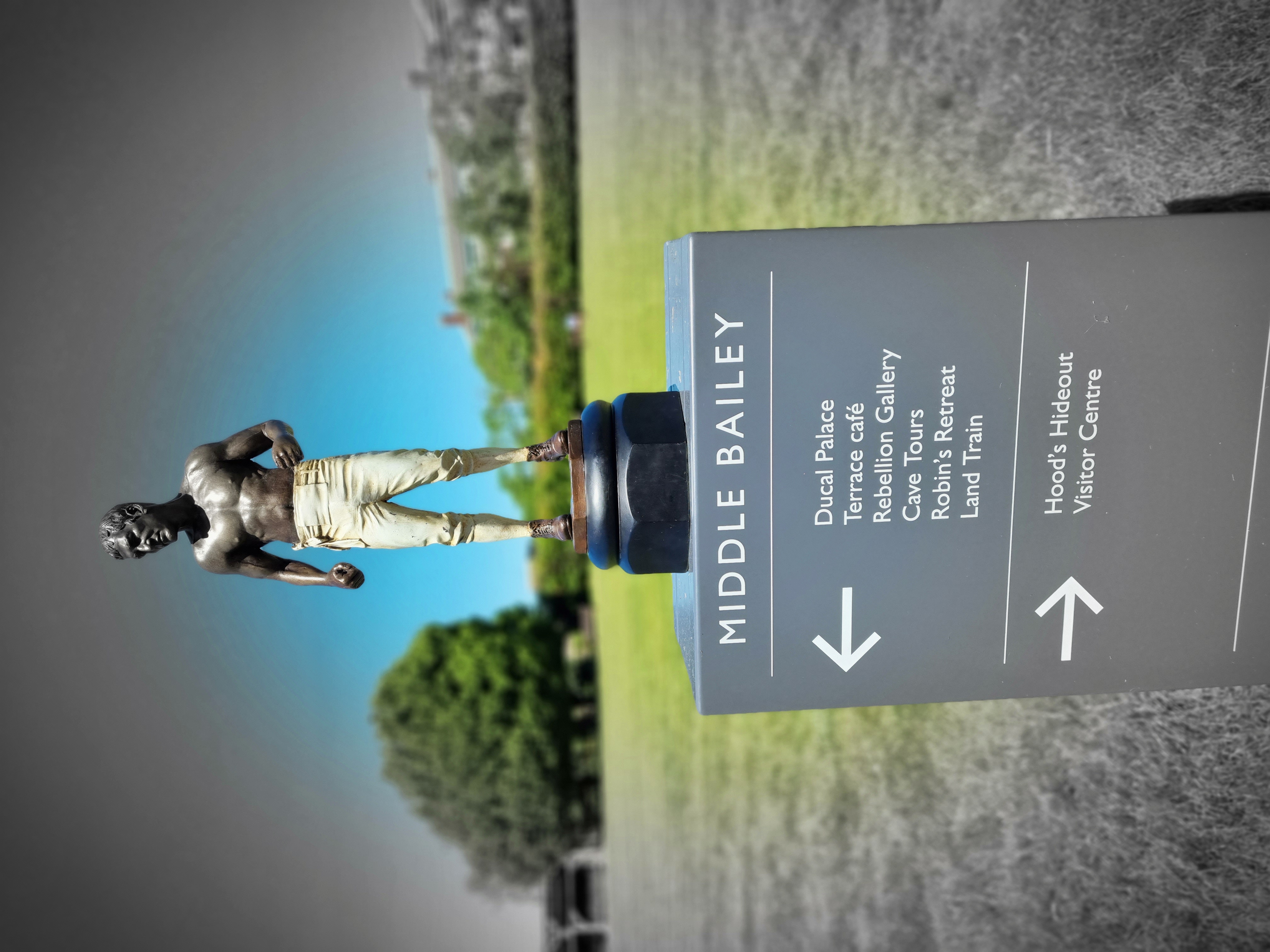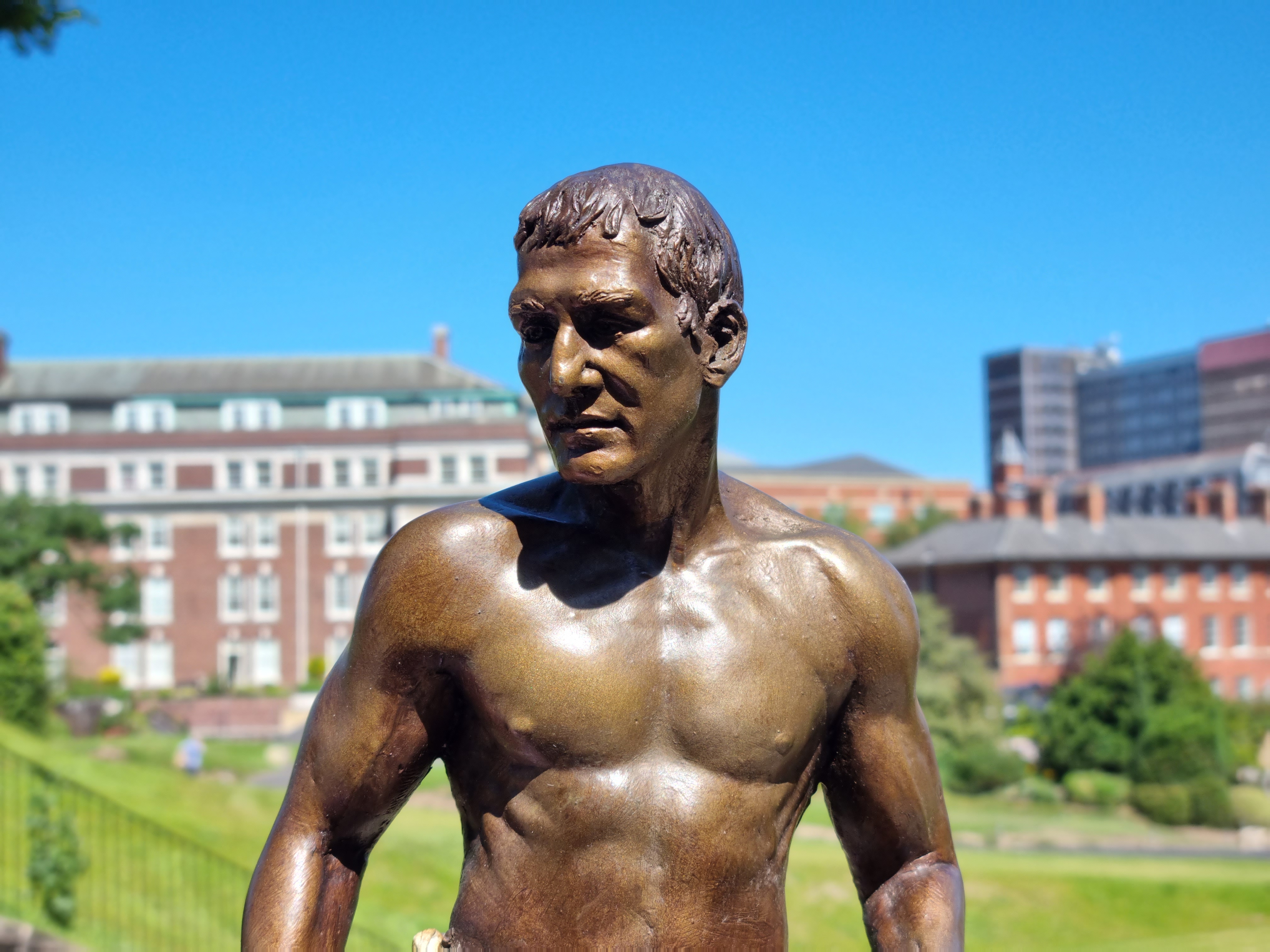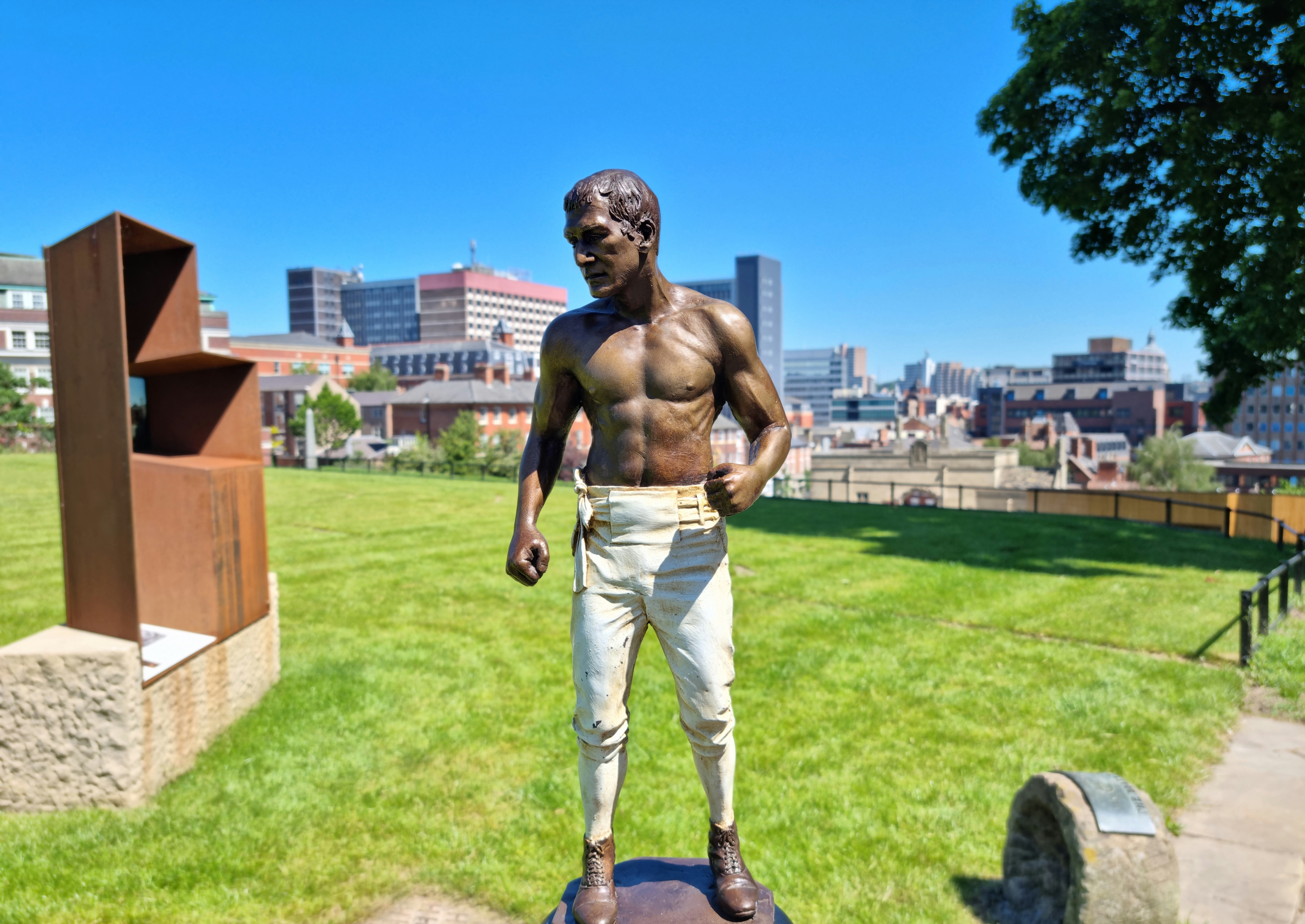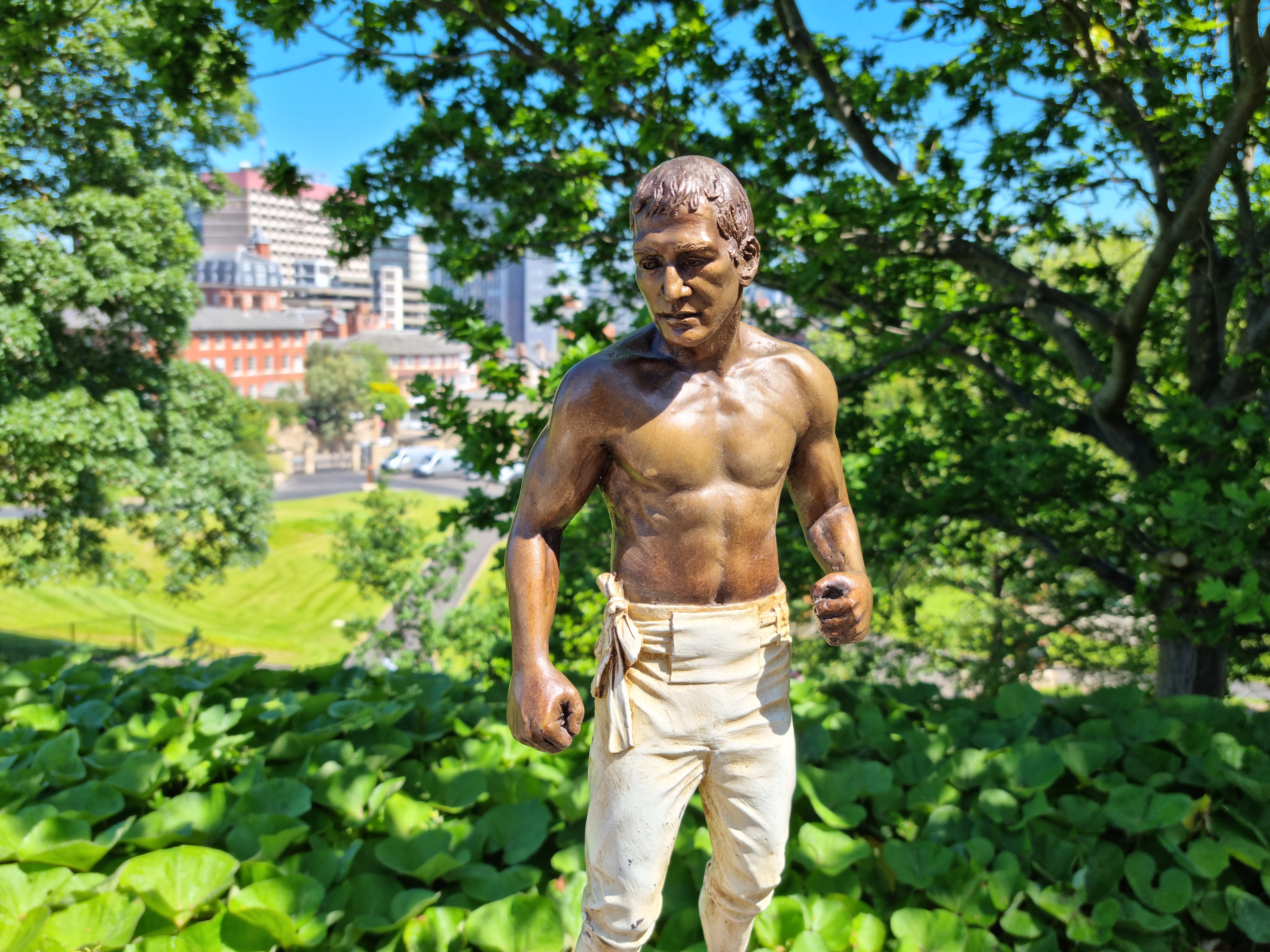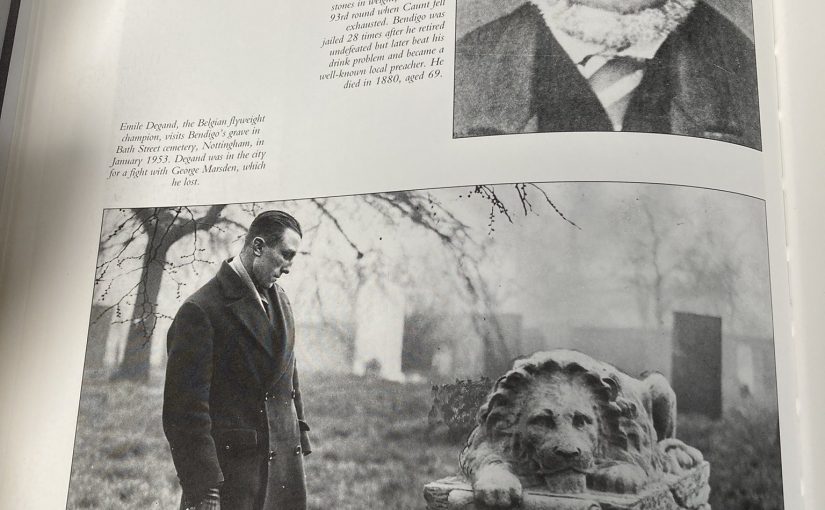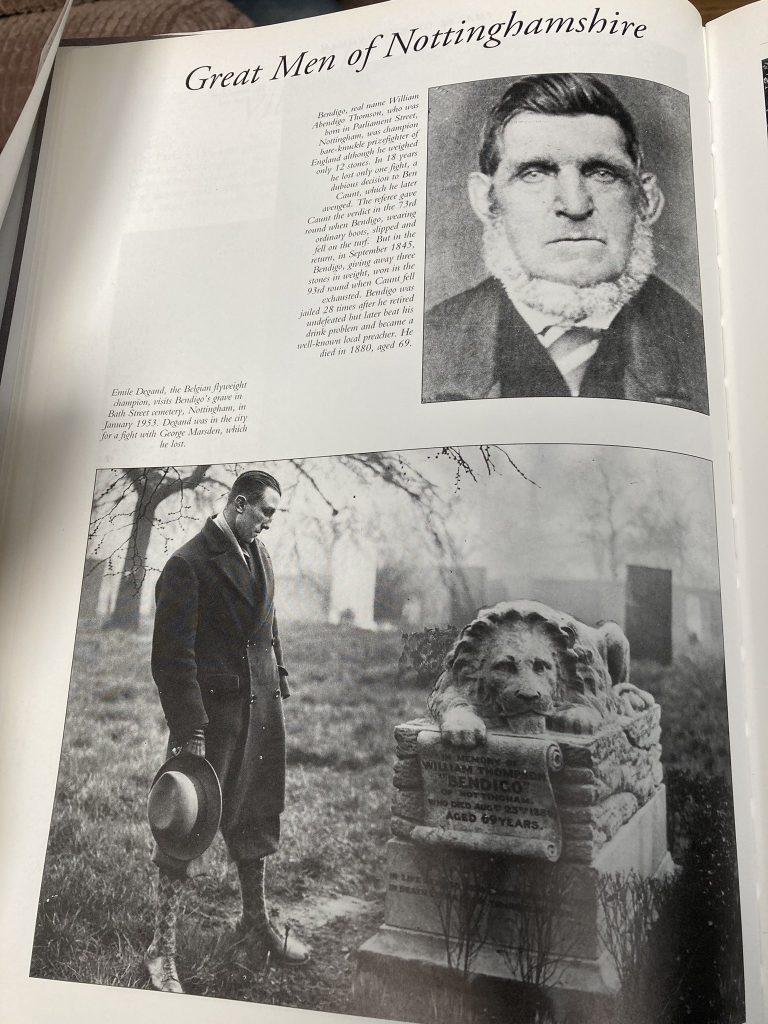When we raise a statue to Bendigo in Nottingham, we will have to decide on a suitable location. What about Nottingham Castle?
Bendigo was afterall, a Nottingham man through and through. He never left the town, other than to pursue his fighting career. His name may have reached every continent in the world, but Bendigo stayed in Nottingham, amongst his own people.
Nottingham Castle, though, may not be the ideal location for a statue of Bendigo. Why?
A Symbol of Oppression
Quite simply, the castle did not represent Bendigo’s people. His people were those who lived in its shadow, downtrodden, uneducated and poor.
As a child, Bendigo would have known about the simmering unrest in the disease ridden streets of Nottingham. He would have known that the Duke of Newcastle had moved away from his palace at the castle. The last Great Ball there had been held in 1776 and the Duke was now living his privileged life at Clumber Park.
Throughout Bendigo’s adult life, it was nothing more than a burnt out shell of a building, having been destroyed during riots in 1831. It was a symbol of the social injustice of the time, a symbol of oppression on the hill.
The castle was actually burning on the morning of Bendigo’s 20th birthday on 11th October 1831.
The riots had begun when news reached Nottingham that the Duke, Henry Pelham Clinton had opposed electoral reform, thereby keeping the power in the hands of the rich. Having stormed the building, the rioters stripped it of the remaining furnishings, destroyed statues and lit a great fire in the basement that destroyed the entire building. Bendigo would have been part of the crowds that watched as the palace lit up the sky like a giant bonfire.
Nottingham Castle in Ruins
As if to confirm his attitude to the town of Nottingham, the Duke left the ruins un-repaired for 45 years, until the Town Corporation stepped in.
During this period Bendigo’s career as a prize-fighter took off, undefeated in 21 matched fights up to 1850.
Following his retirement, a portrait of Bendigo was painted by Thomas Earl. This fantastic piece, painted with oil on canvas is now held by the National Portrait Gallery in London,
The Castle Museum
In 1875, architect T.C. Hine was tasked with renovating Nottingham Castle and turning it into a Museum of Fine Art. This work was completed in 1878 and the Castle became the first municipal museum of art in the country.
The curator was a man named George Harry Wallis, who wanted the museum to inspire the creative and curious imaginations of the people of Nottingham.
Bendigo died in 1880 and we don’t know whether he visited Nottingham’s new Museum of Fine Art. It is ironic that the museum could have displayed that portrait of Bendigo. Maybe it did.
Maybe it should be loaned back to the Castle Museum. So it can inspire the ‘curious imaginations of the people of Nottingham’ again.
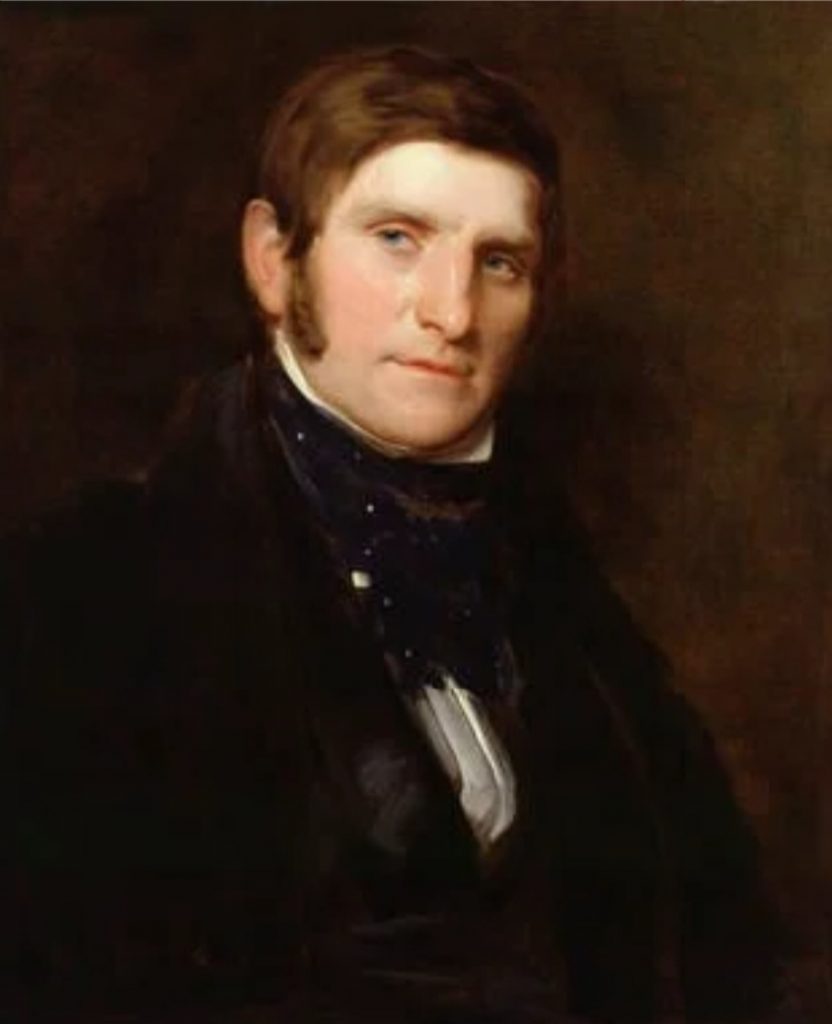
Bendigo Makes A Visit
Either way, we will finish by sharing some images of Bendigo at the castle. We took him (well our small statue of him) there when the castle reopened in June 2021.
